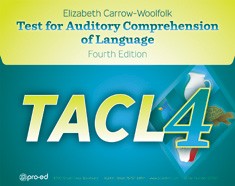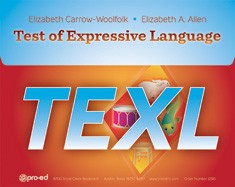Test for Auditory Comprehension of Language (TACL-4)
Complete Kit
- Ages 3 - 12
- Testing Time 20-30 minutes
- Administration Individual
-
Product Code 12700 ( MR #057841 )
* Qualifications required to purchase this item. Click here to complete the qualifications form.
Price $442.00
Contents
-
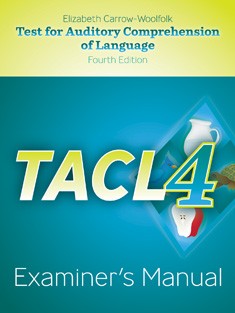
Test for Auditory Comprehension of Language (TACL-4)
TACL-4 Examiner's Manual
$128.00 -
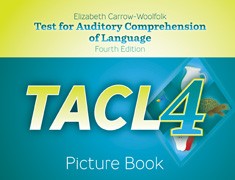
Test for Auditory Comprehension of Language (TACL-4)
TACL-4 Picture Book
$246.00 -
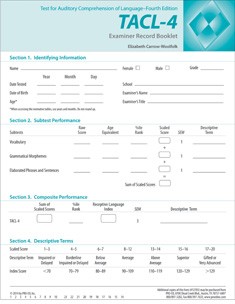
Test for Auditory Comprehension of Language (TACL-4)
TACL-4 Examiner Record Booklets (25)
$71.00 -

Test for Auditory Comprehension of Language (TACL-4)
TACL-4 Critical Reviews and Research Findings for the TACL (1965-2013)
*Not available separately (package component only)
-

Test for Auditory Comprehension of Language (TACL-4)
TACL-4 / TEXL Comprehensive Scoring Supplement
*Not available separately (package component only)
- Vocabulary: The meanings of nouns, verbs, adjectives, and adverbs, and of words that represent basic percepts and concepts.
- Grammatical Morphemes: The meaning of function words (e.g., prepositions, pronouns, determiners) and inflections (e.g., bound morphemes such as noun number and case, verb number and tense, noun–verb agreement, and derivational suffixes).
- Elaborated Phrases and Sentences: The meaning of syntactically based word relations and elaborated phrase and sentence constructions, including the modalities of single and combined constructions (interrogative sentences, negative sentences, active and passive voice, direct and indirect object), embedded sentences, and partially and completely conjoined sentences.
- Enhanced assessment of oral language skills when used in combination with the TEXL and the free reproducible TACL-4/TEXL Summary Form.
- All-new nationally representative normative sample of 1,142 children in the U.S.
- Characteristics of the normative sample were stratified by age relative to region, gender, ethnicity, socioeconomic factors, and other critical variables and are the same as those reported for the preschool and school-age population reported in the Statistical Abstract of the United States 2013 (ProQuest, LLC, 2012).
- The age-range of the test was extended upward to include ages 10-0 through 12-11.
- Age-related entry points, basals, and ceilings ensure that testing time is kept to a minimum and children are only tested on the items that are optimal for their ability level.
- Floor effects and ceiling effects present in the subtests of the third edition were addressed by the addition of both easy and difficult items to the test. As a result, floor and ceiling effects are minimal in the subtests and nonexistent in the composite, the Receptive Language Index.
- Each item on the test was re-evaluated using both conventional item analyses to choose "good" items, and the new differential analyses to find and eliminate potentially biased items.
- A major effort has been made to demonstrate conclusively that the fourth edition is both reliable and valid. This effort involved providing more studies with larger samples than were offered in support of the third edition. Further, the TACL-4 was subjected to diagnostic accuracy analyses, particularly rigorous techniques involving the computation of the sensitivity index, specificity index, the receiver operating characteristic/area under curve (ROC/AUC).
- A copy of the Critical Reviews and Research Findings for TACL: 1965—2013 is included with the each test kit.
- The TACL-4 was co-normed with the Test of Expressive Language (TEXL; Carrow-Woolfolk & Allen, 2014).
- Copyright 2014

 Proud to be Canadian
Proud to be Canadian